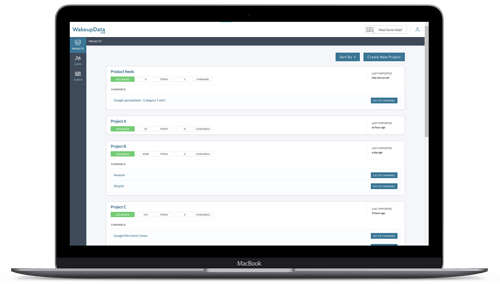Practical ways to utilise AI in writing Product Descriptions
Posted on January 17, 2024 (Last Updated: February 01, 2024)
Have you ever come across a product on the internet and found the description to be lacking, leaving you with more questions than answers? We hate that also.
Creating compelling, detailed and on-brand product descriptions that convert a website visitor or a marketplace page visitor into a customer is one of the most crucial tasks for running a successful e-commerce business but it can also turn into a long, burdening task.
Running an online store is no joke and a lot of the time, it ends up meaning spinning a lot of plates at once. Writing descriptions that match a specific set of keywords and channel requirements can take time from other urgent duties within your task list such as managing customer tickets, and inventory management for instance.
While products without data in the description field can still be displayed, their reach and ability to compete with similar products will be greatly diminished. What a user reads (or doesn't read) about the product greatly influences their decision to make a purchase. Therefore, it is essential to focus on creating detailed and engaging descriptions that can convert your browsing audience into buyers.
Optimizing your descriptions is crucial for your product's ranking on Google Shopping for example. Despite the saying "a picture speaks a thousand words," search engines like Google cannot see images. These search engines crawl your feed to determine if your listing is relevant for different search queries. The keywords you use in both your title and description field play a vital role in Google determining that relevancy. So, it's important to add accurate keywords to your title and also to your description.
With the growth and development of the world of AI, the field of feed optimisation finds ways of utilising AI tools to help ecommerce businesses save time and improve their ad performance.
With some preparation and support that we will provide you within this article and a generative AI at your disposal, you can get yourself started on the path of writing compelling product descriptions in no time.
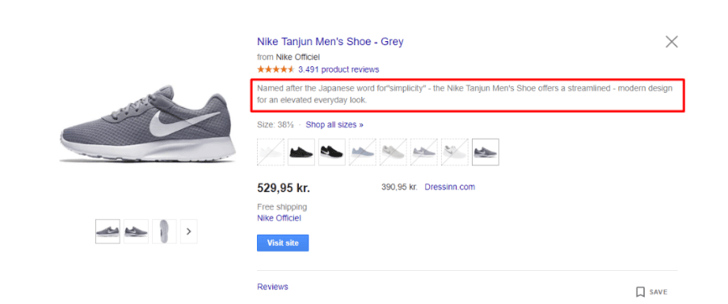
You want to learn first about what product descriptions mean and how to find your way around composing such? Check our blog here.
In this article, we'll explore the benefits of using AI to create product descriptions, how it works, and whether it's a viable option for your business.
How do AI product description generators work?
How does artificial intelligence develop product descriptions?
Product descriptions are generated by AI through a multi-step procedure. The first phase is data collection, in which an algorithm collects product information such as its name, features, benefits, and specs. This data is then analysed using natural language processing (NLP), a kind of artificial intelligence (AI) that assists computers in understanding and interpreting human language.
Once the algorithm has a firm grasp on the product, it may begin to generate a description. This is accomplished through the use of several methodologies such as template-based systems, rule-based systems, and neural networks. Rule-based systems employ a set of rules to construct a description based on the product's characteristics and advantages, whereas template-based systems use pre-designed templates and fill in the product-specific data.
Neural networks, on the other hand, are more sophisticated, requiring the algorithm to be trained on a big dataset of product descriptions. This training is then used by the algorithm to build its own descriptions based on the input data. This might result in more original and specialised descriptions for the individual product.
Once an AI-generated product description has been created, it is often evaluated by a human to confirm accuracy and tone. This approach aids in the refinement of the algorithm and the production of high-quality descriptions. Overall, the process of using AI to generate product descriptions is difficult, but it may save firms time and resources while still delivering high-quality descriptions that help sell their items.

How to utilise Smart Data in Feed Management?
We've even shifted some crucial buttons for easier access - because who wants to stretch their fingers to the top right when you can effortlessly reach the bottom left?
Now, for the detail-oriented among us, you'll love the UI Enhancements for Review Fields. Reviewing fields on new import steps has never been this smooth and efficient. Say goodbye to the hassle and hello to a more user-friendly journey. And there's more! We've put the spotlight on Key Features that deserve your attention. Improved visibility and functionality, along with optimised on-page help and support, means you're never left scratching your head over project issues. Let's not forget the Login, Create, and Reset Password Pages. We know these are the gateways to your work, and we've made them more seamless and modern. It's the warm welcome (or welcome back) you deserve!
But wait, there's a cherry on top - Channel Mapping Updates. With revamped template mappings, enhanced flexibility in pre-mapped fields, and visually prominent features, you're in for a treat. Plus, we've made navigation a breeze with updated breadcrumbs and clearer menu elements.
Every click, every navigation, and every moment you spend with our software is now more intuitive and engaging. We can't wait for you to experience the difference!
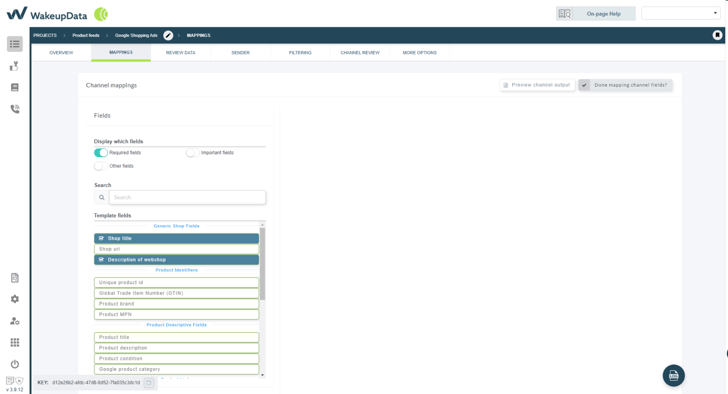
Advantages of Using Artificial Intelligence for Writing Product Description
Using AI-generated product descriptions for e-commerce enterprises has various advantages. One of the most significant benefits is that AI-generated descriptions may save enterprises time and money. An algorithm may swiftly produce a huge number of descriptions with minimum human input, rather than having to write descriptions for each product from the start. This is especially beneficial for firms that have a large number of items or often change their inventory.
Another advantage is that AI-generated product descriptions can be more consistent and accurate than human-written descriptions. There is less risk of mistakes or inconsistencies since the algorithm analyses the product data and develops the description based on that information. This can assist to increase client trust and improve the entire buying experience.
Product descriptions created by AI can help firms save money on employing expert writers or copywriters. While human-written descriptions might be useful in some situations, AI-generated descriptions can be just as good at expressing product information and advantages. This means that companies may devote more resources to other aspects of their operations, such as marketing and product development. Overall, there are multiple advantages to employing AI-generated product descriptions, which may help firms stand out in a congested e-commerce industry.
AI-generated descriptions can also aid firms' SEO efforts. Product descriptions are used by search engines to comprehend what a product is and what it delivers, and having high-quality, comprehensive descriptions can boost a product's visibility in search results. Furthermore, because AI-generated descriptions are frequently optimised for certain keywords, they can aid in the improvement of a product's rating for those keywords.
Using an AI product description writer can help in the following ways:
- Saves time and money
- Increases the efficiency with which attractive product descriptions are created.
- Ensures that the tone and language of the website are consistent.
- Helps with client engagement and can enhance revenue by improving search engine optimisation (SEO) and search ranking
- Allows for description customisation and personalisation.
- Reduces human errors and inaccuracies in product information
- Allows for the rapid generation of a bigger inventory of product descriptions.
And much more.
What are AI-generated product descriptions?
AI-generated product descriptions are exactly what they sound like: product descriptions written with the assistance of artificial intelligence technology. This means that, rather than a human writer writing the description from the beginning, an algorithm analyses and understands the product's features and benefits, and then provides a description that is both informative and engaging.

The AI technology used to construct these product descriptions can range from basic rule-based systems to complicated neural networks, but the end aim is the same: to develop a description that properly depicts the product and helps potential customers sell it. AI-generated product descriptions can save organisations time and resources in many circumstances since they can produce a huge number of descriptions quickly without the need for human input.
While AI-generated product descriptions are still a relatively new method, they are swiftly gaining traction as firms attempt to streamline their e-commerce processes and differentiate themselves in an increasingly competitive market.
Real-world instances of businesses that use AI-generated product descriptions
Many businesses in a variety of industries are already employing AI-generated product descriptions to boost their e-commerce operations and marketing efforts. Walmart, for example, utilises AI-powered robots to scan shelves and write product descriptions for its online store. This technique enables Walmart to update its online inventory quickly and accurately with useful and uniform descriptions, thereby improving the consumer experience and increasing sales.
Another example is Amazon, which utilises a blend of human and machine-generated product descriptions. A9, the company's artificial intelligence technology, analyses client search queries and provides product descriptions based on that information. Human editors then go over the descriptions to confirm their quality and correctness. This method enables Amazon to write descriptions for its enormous inventory fast while maintaining a high degree of quality.
The travel industry is another good example where AI-generated descriptions are being utilised. For instance, some brands are using such to generate hotel descriptions to highlight crucial features or amenities of each property. By doing so, they work towards enhanced customer experience and thus improve their bookings through correct information.
The potential of using AI-generated descriptions is immense for businesses of all sizes and types.
The disadvantages and constraints of AI-generated product descriptions
While AI-generated product descriptions have numerous advantages, there are also downsides and restrictions to take into account. The correctness of the descriptions is one possible constraint. While AI-generated descriptions are intended to be precise and logical, there remains the possibility that the algorithm could misinterpret or mislead key product characteristics or advantages. This might cause client misunderstanding or irritation, which can be detrimental to the firm.
A lack of personalisation is another possible constraint. Because AI-generated descriptions are based on data and algorithms, they might not be as personalised or distinctive as human-written descriptions. This might make it more challenging for firms to distinguish among rivals or have a distinctive brand identity.
Additionally, there is also the possibility of generalisation. AI-generated descriptions may be overly simplistic in some circumstances, or they might not include the depth and information that buyers want. This can lead to descriptions that are less interesting or convincing, resulting in fewer sales.
Lastly, there's also a chance of moral difficulties with AI-generated product descriptions. Some algorithms, for example, may be intended to purposely influence or mislead clients to maximise sales. This might undermine the company's brand and lose consumer trust.
While AI-generated product descriptions have numerous advantages, it is critical to be mindful of possible disadvantages and restrictions. Businesses may maximise the advantages of AI-produced descriptions whilst minimising the hazards by thoroughly analysing and improving the generated descriptions and utilising them in conjunction with human-written material.
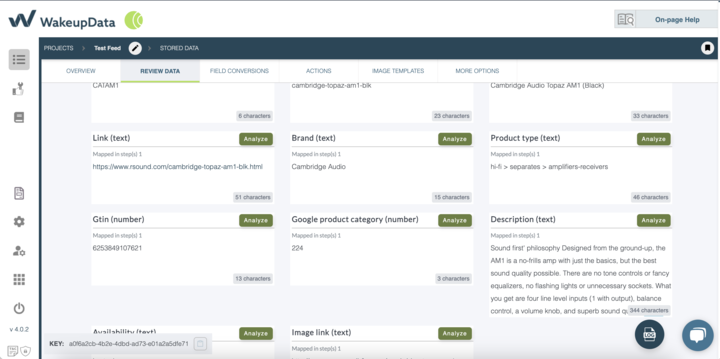
Practical ways to incorporate artificial intelligence-generated product descriptions inside your e-commerce strategy
Including AI-generated product descriptions in your e-commerce strategy may help you save time, enhance regularity, and boost revenue. Below are some ideas on how to do so correctly.
- Define your objectives: Begin by defining the objectives you wish to achieve using AI-generated product descriptions. This might include increasing sales, enhancing your SEO rankings, saving time and resources, or saving money.
- Select the appropriate tool: There are several AI-powered solutions for creating product descriptions. Investigate and contrast your alternatives to locate the one that best suits your requirements and budget.
- Create explicit criteria for the algorithm to follow: To guarantee that the produced descriptions fulfil your quality requirements, create clear rules for the algorithm to follow. This might include standards for tone, style, and highlighting certain product characteristics.
- Monitor and improve: Keep an eye on the quality and efficacy of the generated descriptions and make changes as appropriate. This may entail checking the descriptions for correctness and modifying the algorithm or recommendations to enhance the outcomes.
- Combine with human-written information: While AI-generated descriptions can be helpful, they must be balanced with human-written content. Consider employing AI-generated product descriptions for ordinary goods and human-written product descriptions for more sophisticated or high-end products.
- Test and analyse: Test and analyse the performance of the produced descriptions regularly to find areas for improvement. This might include A/B testing alternative descriptions or tracking conversion rates and other data with analytics tools.
In general, incorporating AI-generated product descriptions into your online retail strategy necessitates meticulous preparation, tracking, and optimisation. Companies may boost their online visibility and drive revenue in the highly competitive e-commerce industry by following these guidelines and establishing the ideal combination of AI-generated and human-written content.
The most useful methods for efficiently employing AI-generated product descriptions
AI-generated product descriptions may be an invaluable instrument for organisations, but they must be used correctly to produce the best results. Here are some suggested practices for efficiently employing AI-generated product descriptions:
- Apply specific guidelines
- Track quality and precision
- Always merge human and AI-generated content
- Do diligently you SEO
- Test
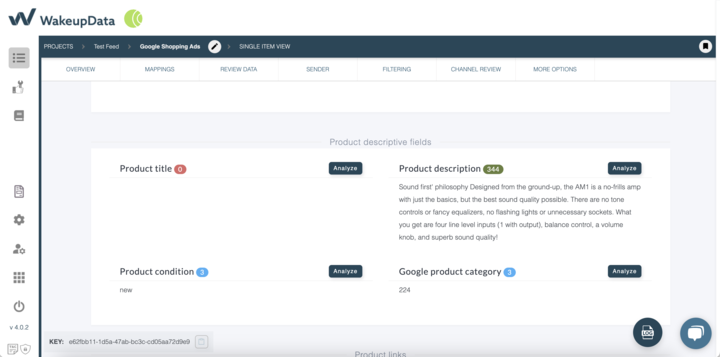
AI-generated product descriptions are projected to become increasingly accurate and effective as AI technology advances.
Improved efficiency and cost-effectiveness for e-commerce enterprises is one possible outcome of AI-generated product descriptions. Companies can conserve both time and money by automating the procedure of creating product descriptions. These assets can then be directed to other parts of the organisation.
Furthermore, by delivering accurate and superior product details, AI-generated product descriptions have the potential to improve customer service. This may lead to higher client trust and happiness, and hence increased sales and income for e-commerce enterprises.
As artificial intelligence technology advances, it is feasible that AI-generated product descriptions may become more personalised and suited to particular buyer tastes. This might entail leveraging consumer data to create descriptions suited to their interests and preferences, resulting in a more personalised buying journey.
In general, the future of AI-generated product descriptions is promising, with the potential to significantly revolutionise the world of e-commerce. While there are certain downsides and restrictions to take into account, firms that effectively incorporate AI-generated product descriptions into their e-commerce strategy may acquire an edge in a fast-evolving online industry.
We, at WakeupData, as a software provider, aim to deliver our customers with not simply a feed management tool but a solution that is constantly under further development. Our product team is working day and night to release our latest feature - a Chat GPT integration into our platform - assisting marketing professionals with generating titles, descriptions and so on.
Stay updated, stay technical, and keep tweaking those feeds for the best results!
Feel more than welcome to get in contact with us in case you have any questions, we are always here to support you.
Subscribe and keep yourself updated with our newsletter as we go deeper into the world of e-commerce.
You can read how WakeupData helped Kaufmann to achieve a 44% revenue increase and 71% more sales YoY by utilising proper feed optimisation software. - https://www.wakeupdata.com/blog/case-kaufmann
Or how we helped Plantorama with the implementation of Google LIA, has taken the next step in their omnichannel journey, improving the buying experience for their customers, and has increased the store visit rate by 46%. At the same time, they saw an increase in conversion rate of 9% with Google LIA over traditional Google Shopping Ads.
Stay efficient!
P.S. We are geeky and nerdy and thus love to share knowledge with our audience so do not hesitate to contact us for more information on anything feed-related through our social media channels or contact information.
Book a short meeting with us and let's talk business.
You think your feeds are as efficient as they can be? Book a free feed audit and figure it out for yourself.



